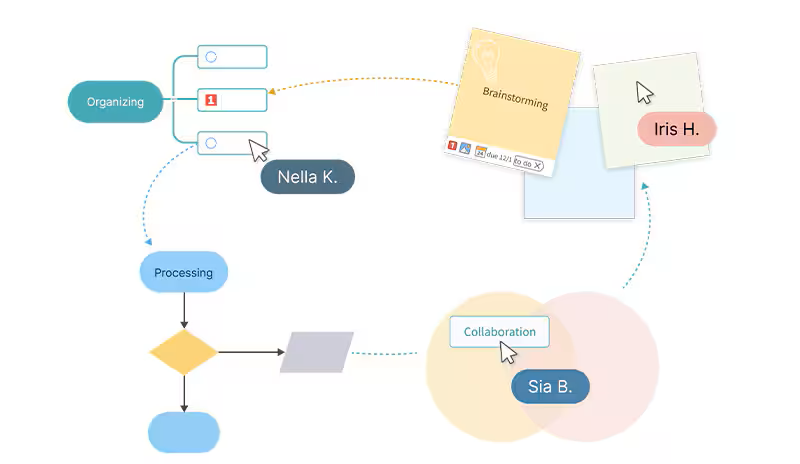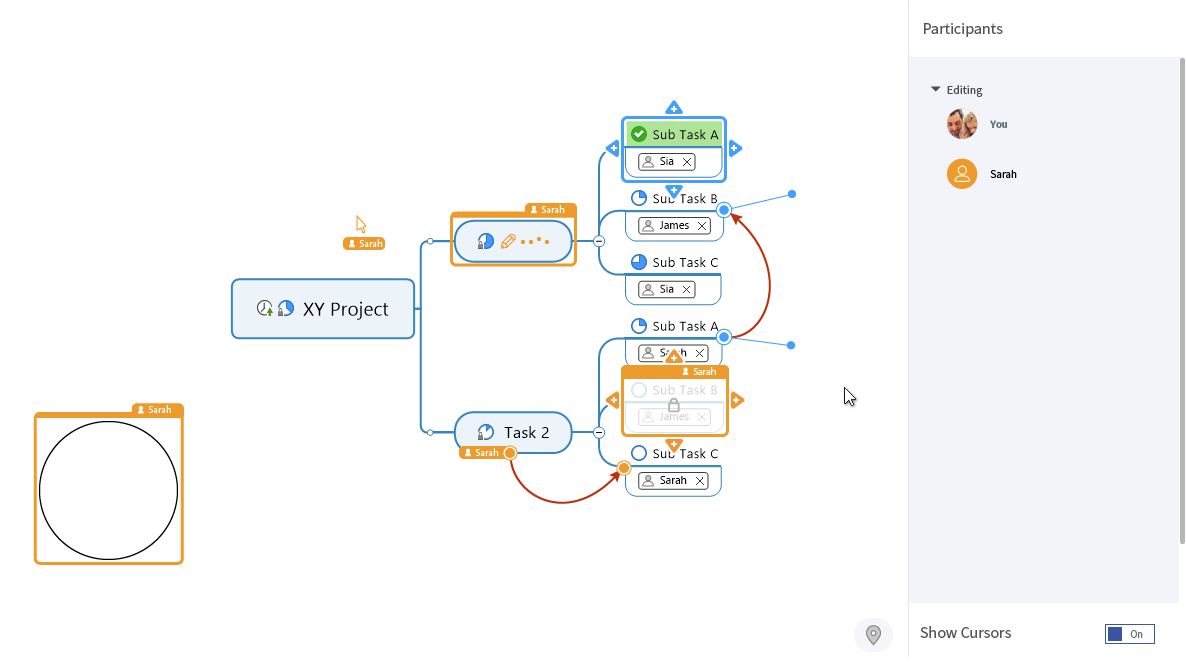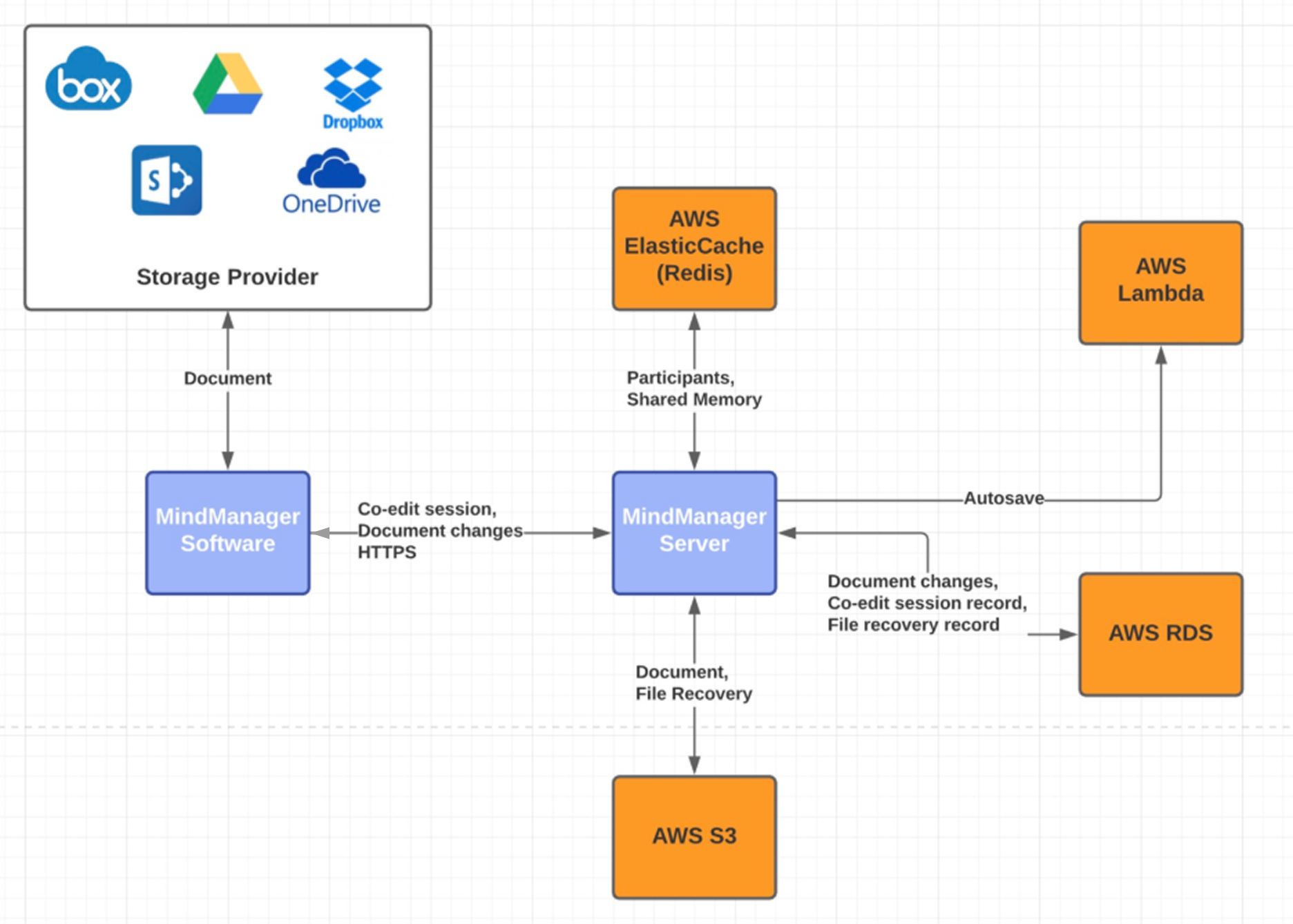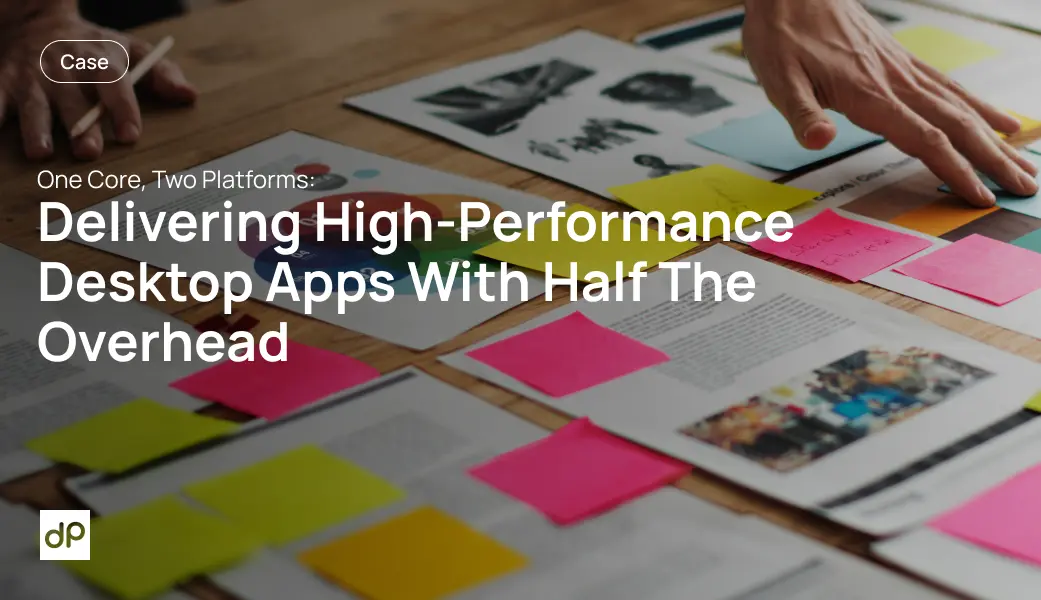Building Real-Time Collaboration Across Five Platforms - Without Compromising Speed or Consistency
Client Background
Our client, a global software company behind MindManager, provides productivity and collaboration tools to millions of users worldwide. MindManager helps teams visually organize ideas, manage complex projects, and plan strategically through dynamic mind maps.
Business Challenge
Traditional file-based mind mapping slowed modern teams. Collaboration meant passing files back and forth, causing version conflicts, delays, and lost progress.
The client needed to:
- Enable simultaneous co-editing of large maps with attachments.
- Maintain sub-second sync for dozens of concurrent users.
- Preserve document integrity and order across multiple platforms.
- Handle failures gracefully - reconnections, autosave, network drops.
- Deliver all of this securely and at global scale.
Key Achievement
We enabled real-time collaboration for complex XML-based documents with:
- Sub-second latency for operation propagation.
- Dozens of concurrent users editing the same map.
- Support for attachments over 10 MB per operation.
- Cross-platform consistency between desktop, web, and mobile clients.


How did we make it work?
Real-Time Synchronization

Our system enabled real-time data synchronization between clients using Socket.IO WebSockets with Redlock to ensure consistent operation ordering and reliable reconnection handling.
- WebSocket Infrastructure (Socket.IO v1.7.x): Uses WebSocket protocol with fallback, auto-reconnect, and room-based broadcasting for efficient real-time communication.
- Operation Broadcasting Flow: Clients send operation deltas, and the server enforces strict ordering using Redlock to prevent race conditions.
- Latency Optimization Strategies: Reduces perceived delay through local acknowledgments and selective event delivery.
- Reconnection Handling: Clients request and apply missed operations after reconnecting, ensuring no data loss or duplication.
This architecture delivers reliable, low-latency synchronization with strong ordering guarantees and seamless reconnection for multi-user real-time systems.
Cross-Platform Consistency

All MindManager clients shared a unified XML-based operation format and consistent synchronization logic across Windows, macOS, Web, and Mobile, ensuring identical collaboration behavior on every platform.
- Platform Architecture:
All platforms use the same XML schema, the Web client reuses the Core engine compiled to WebAssembly or JavaScript.
- Session Initialization:
Clients validate cached files by modified time; if outdated, the file uploads to the server, which stores it in S3 so subsequent users load it faster.
- Platform-Specific Notes:
Web: Limited by browser memory → uses operation pagination and streaming.
Desktop: Supports native file locking and faster XML parsing.
Mobile: Handles background disconnects via aggressive reconnection logic.
A single XML format, shared core logic, and distributed autosave workflow guarantee consistent, efficient collaboration across all MindManager platforms.
Conflict Resolution

We used a delta-based synchronization model instead of classic Operational Transformation, ensuring stable collaboration and simple conflict handling across complex XML-based documents.
- Delta-Based Transformation: Replaces traditional OT with XML GroupDeltas, avoiding the need for thousands of operation-specific transformation rules.
- Selection Conflicts: If two users select the same topic, ownership is resolved deterministically via email-based tie-breaking.
- Operation Ordering Conflicts: Server enforces a global operation order — the last write wins based on server timestamps, keeping document states valid and consistent.
- Attachment Conflicts: Large attachments are base64-encoded, buffered on the server, and processed sequentially under Redlock, ensuring proper synchronization and data integrity.
By combining ordered delta application, deterministic conflict rules, and synchronized attachment handling, the system maintains reliable, predictable document states across all users.

Main Technical Challenges
- 01 Ordering & Consistency Across Platform
Ensuring every user saw the same document state in real time - achieved through Redlock and a global order counter.
- 02 Reconnection & Autosave Reliability
Lambda-based autosave and resumable operation queues eliminated data loss during network interruptions.
- 03 Large Attachments Handling
Enabled >10 MB operations with buffering and base64 streaming, keeping sync latency under one second.
- 04 Cross-Platform Synchronization
Unified XML schema and shared MindManager engine guaranteed identical outcomes across desktop, web, and mobile.
- 05 Conflict-Free XML Updates
Delta-based XML operations replaced OT, reducing complexity while maintaining correctness.
Value Delivered by DevPulse
- Seamless real-time collaboration - users co-edit maps live without version conflicts.
- Cross-platform reliability - identical behavior on Windows, Mac, Web, iOS, and Android.
- Scalability at enterprise level - thousands of concurrent sessions daily.
- Fast, stable performance - sub-second latency even on large, attachment-heavy maps.
- Future-proof design - modular architecture ready for cloud integrations and analytics.
Development Timeline
2020 - ongoing
Team Composition
- 6 Developers (C++, C#, JS, Mobile)
- 4 Manual QA
- 3 Automation QA
- 2 Product Manager
- DevOps Engineer
- 1 Designer
Technology
- Frontend: React + TypeScript, WPF (C++/C#), Cocoa (C++/Swift), Kotlin, Swift
- Backend: Node.js, Express.js, Socket.IO, MySQL, Redis, AWS SQS, Lambda, S3
- Infra: Docker, ECS/Kubernetes, CloudFront, Datadog, TLS 1.2+, Auth0/Cognito
Location
Canada
Architecture
Real-time, event-driven microservices architecture with distributed locking and serverless autosave

Vlad Tukhtarov
CEO devPulse
Founded DevPulse in 2014, driving product-led growth through innovative, high-performance software architectures and strategic technology adoption.
Request A Free No-Obligation Quote
By clicking "Send A Message", You agree to devPulse's Terms of Use and Cookie Policy.



